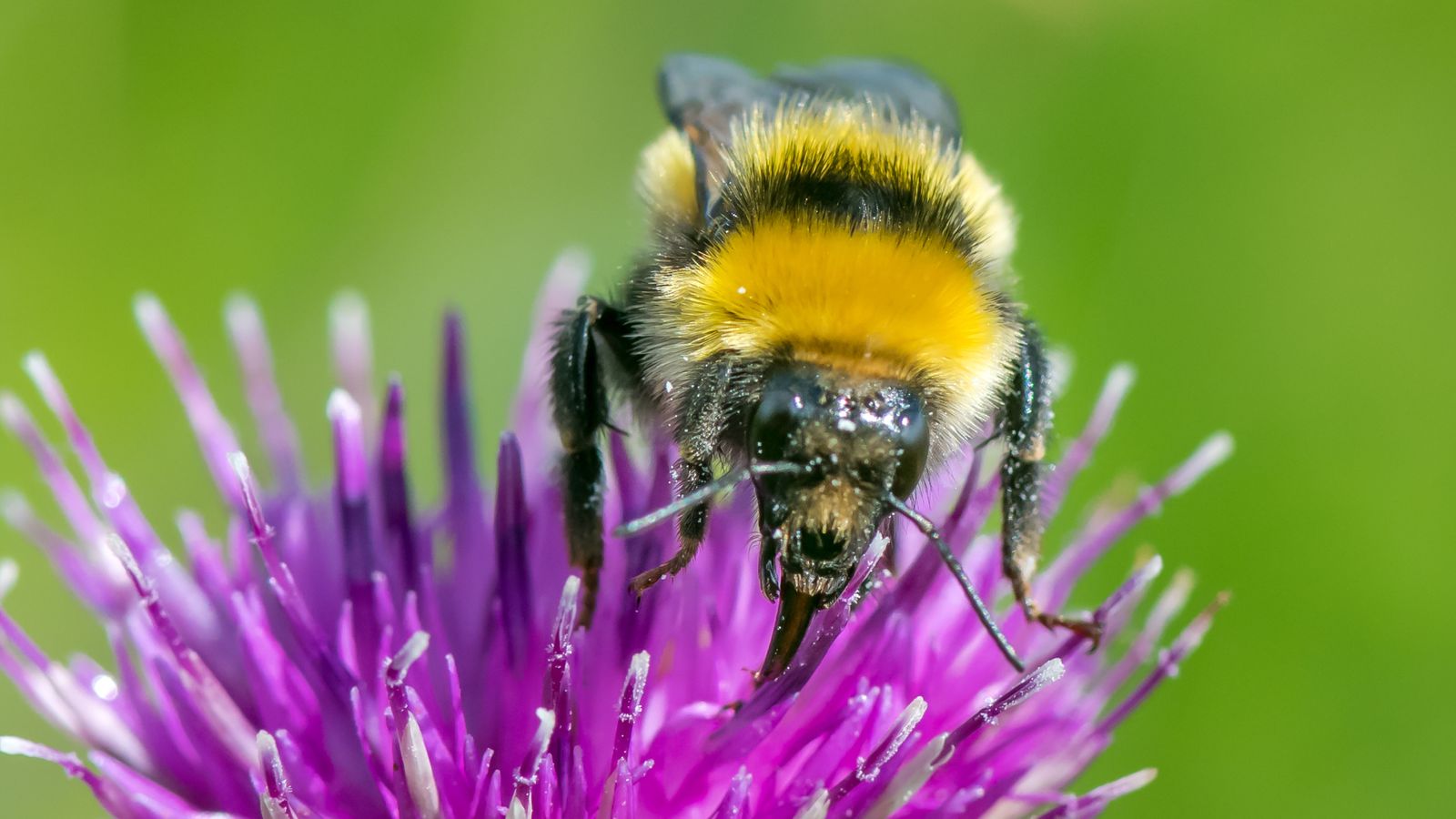Conservationists have had a “once-in-a-lifetime moment” after discovering one of the UK’s rarest types of bees in a remote part of northeast Scotland.
Great Yellow bumblebees were spotted in Caithness, 10 miles south of John O’Groats, in an area of thick heathland.
The bees, which are classified as endangered, are now only found in five known population centres: Caithness, North West Sutherland, Orkney, the Inner Hebrides and the Outer Hebrides.
The Bumblebee Conservation Trust discovered a nest of the bees while carrying out surveys in the north of Scotland.
Conservation Officer for the Bumblebee Conservation Trust, Katy Malone, who made the rare discovery, said: “This was a once-in-a-lifetime moment and one I’ll remember forever.
“It’s rare to be able to find any bumblebee nest in the UK, but to observe and film a Great Yellow bumblebee nest is astonishing – it’s one of the rarest bumblebees in the UK.
“Filming was just incredible. All was quiet when I arrived but soon bumblebees appeared and began buzzing around the entrance.
“Bumblebees do not generally use the same nest each year as they have an annual lifecycle.
“However, they also don’t read the rule books either, so I’ll definitely be keeping a close eye on the site going forward to see if it will be used again.”
15m bees 'could be destroyed' under 'monumentally stupid' post-Brexit import ban
The Great Yellow bumblebee used to be widespread throughout the UK, but in the last century its population has declined by 80%.
Experts say this is due to the loss of flower-rich meadows and intensification of farming and grazing practices.
The discovery, part of a project supported by a £31,000 grant from the ScottishPower foundation, aims to establish the population and location of the insect and to help advise landowners on how to restore and recreate habitat to boost numbers of the endangered species.
The more sugar nectar has, the thicker it becomes – and that creates problems for bees
In the video clip and images captured by the researchers, the Great Yellow bumblebee’s distinctive mustard-yellow body and black marking between the wings are visible as it buzzes around the grassy area.
Melanie Hill, executive officer for the ScottishPower Foundation, said: “The bumblebee population plays an important role within the wider ecosystem. We’re so proud that our funding has supported this landmark discovery”.
A third of food crops are pollinated by bees and other insects and Greenpeace estimates the economic value of pollination services provided by bees globally amounts to some €265bn (£226bn).
Diseases and parasites, climate change and wider industrial agricultural practices along with pesticides have combined to reduce bee numbers across the UK and Europe.






















